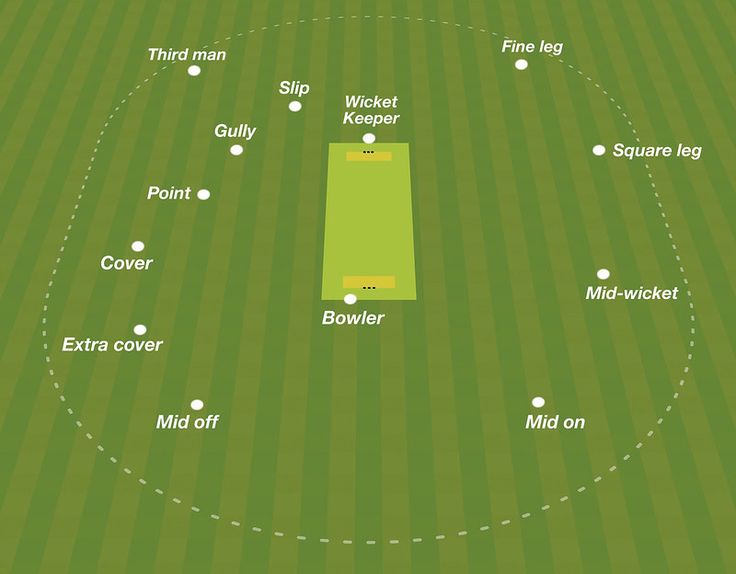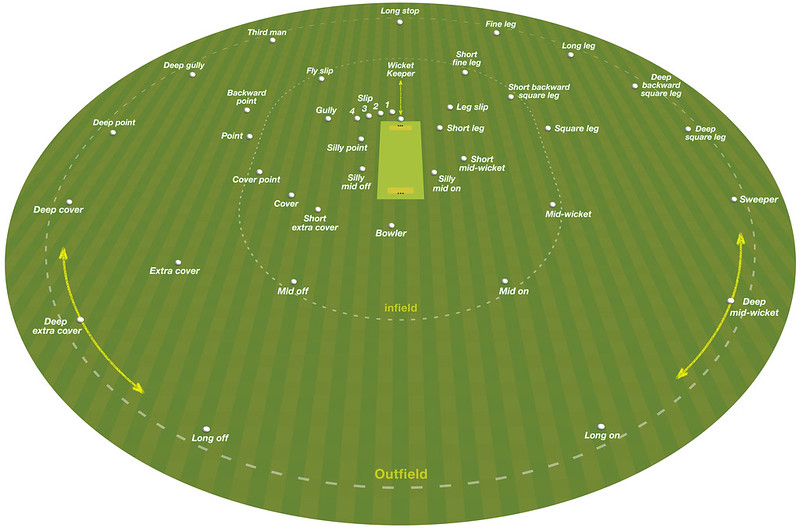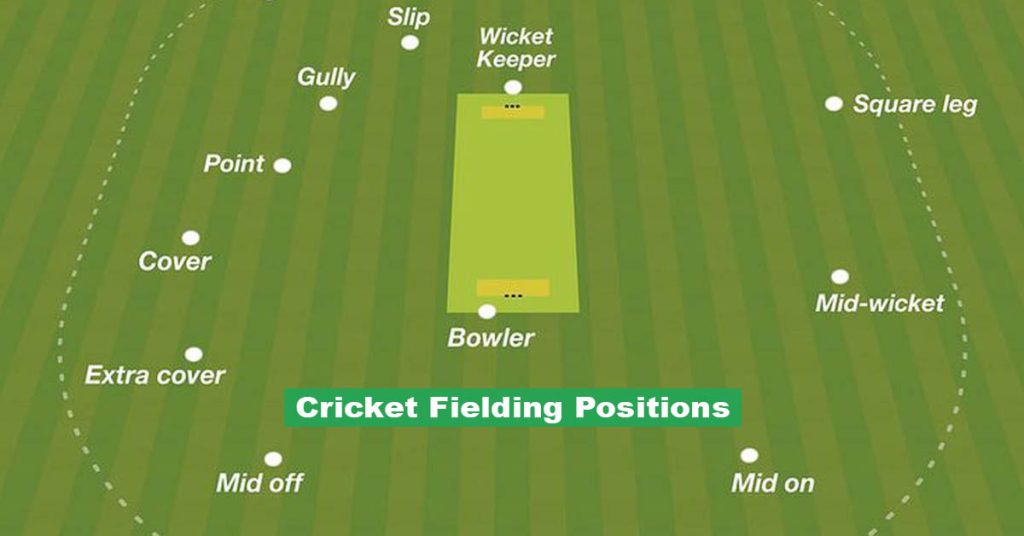Cricket fielding positions have grown significantly over time. Long gone are the days when captains would just rely on orthodox setups, giving batsmen easy chances to find gaps.
Today, fielding in cricket is both a scientific and physically demanding aspect of the game. Cricketers train for specific positions based on their physical strengths, whether it’s the lightning reflexes needed in the slips or the agility required on the boundary ropes.
Here’s a detailed guide to all cricket fielding positions, from wicketkeeper and third man to mid-wicket and fine leg.
All Fielding Positions in Cricket

Basic Fielding Positions:
- Wicketkeeper
- Third Man
- Slips
- Gully
- Point
- Cover
- Mid-Off
- Mid-On
- Mid-Wicket
- Square Leg
- Fine Leg
- Short Leg (Bat Pad)
Advanced or Modified Fielding Positions:
- Short Third Man
- Extra Cover
- Forward Short Leg
- Deep Backward Point
- Deep Point
- Deep Extra Cover (Sweeper)
- Deep Cover (Sweeper)
- Long-Off
- Long-On
- Deep Mid-Wicket
- Deep Forward Square-Leg
- Deep Square Leg
- Backward Square Leg
- Deep Backward Square Leg
- Leg Slip
- Short Fine Leg
Read More:- Cricket Pitch Length, Measurements and Dimensions: A Comprehensive Guide
How Are Cricket Fielding Positions Named?

Fielding positions in cricket are named with polar coordinates in mind, where the batsman at the striker’s end serves as the anchor point. Terms like “cover,” “leg,” and “mid-wicket” are used to describe angles relative to the batsman, while words like “silly,” “long,” and “deep” describe the distance from the batsman.
It’s important to note that these terms were originally designed for fielding setups aimed at right-handed batsmen, as they were more common in the early days of cricket.
The terms themselves are quite descriptive:
- Leg: Refers to the leg side of the batsman, also called the “on” side.
- Silly: A position very close to the batsman.
- Mid: A midway point between the batsman and the boundary.
- Long and Deep: Farther from the batsman, closer to the boundary.
- Short: Closer to the batsman but not as close as “silly.”
There are five main angles used to describe fielding positions:
- Fine: A fielding angle along an imaginary line running down the center of the pitch, splitting the stumps.
- Square: An angle in line with the popping crease.
- Backward: Behind the square angle.
- Forward: In front of the square angle.
- Wide: Farther from the centerline of the pitch.
Every Fielding Position Explained

Before diving into the specific positions, it’s essential to understand that the cricket field is divided into three parts:
- Close Infield: The 10-15 yard circle around the batsman, used for catching and saving singles.
- Inner Ring: The 30-yard circle, especially relevant in limited-overs cricket for fielding restrictions.
- Outfield: The area between the inner ring and the boundary.
Wicketkeeper
The wicketkeeper is the only fielding position that cannot be replaced. Positioned behind the stumps, the keeper stands close to the stumps when facing spinners and farther back for fast bowlers. The role requires sharp reflexes for catches, stumpings, and diving stops to prevent boundaries.
Slips
Slip fielders are positioned on the off-side behind the batsman to catch edges. Slips are arranged in a diagonal formation to avoid colliding while attempting catches. The number of slips depends on the bowling speed, and sometimes, leg slips are employed, especially against spinners.
Third Man
Third man is a key position in limited-overs cricket. This fielder prevents boundaries from cut shots and is stationed along the boundary, typically in line with the slip cordon.
Gully
Gully is placed near the slips but more toward the off-side. The position is used to catch deliveries that are edged by batsmen trying to play square drives. It’s an essential position for quick bowlers, particularly when the pitch is slow.
Point
Point is situated directly in line with the batsman on the off-side. The fielder here must be quick and agile, as they are responsible for stopping hard-hit shots and executing run-outs. A backward point fielder is positioned slightly behind this line.
Cover
The cover fielder is positioned at a 45-degree angle on the off-side. This role is vital for stopping powerful drives and cover shots. A fielder placed between cover and mid-off is known as extra cover.
Mid-Off & Mid-On
Mid-off is positioned in line with the bowler, on the off-side, to stop straight drives. Mid-on is the mirror image of mid-off but on the leg-side, primarily preventing singles down the ground.
Mid-Wicket
Mid-wicket is located on the leg side, near the boundary. This is a critical position to stop powerful pull and sweep shots.
Square Leg
Square leg is positioned directly in line with the batsman on the leg side, often close to the leg umpire. A lot of runs are scored in this area from shots like the hook and pull.
Fine Leg
Fine leg stands near the boundary, behind square on the leg side, and is essential for stopping deflections and fine sweeps.
Short Leg
Positioned extremely close to the batsman on the leg side, short leg is used mainly against spinners, to catch deflections from defensive shots.
FAQs
How many different fielding positions are there in cricket?
In total, there are nine fielding positions (excluding the bowler and wicketkeeper) that can be filled on the field at any time. The captain decides where each player should stand based on the game’s strategy.
What is a fly slip in cricket?
A fly slip, also called “short fine third man,” is a fielder positioned just inside the infield, near the third or fourth slip.
Where is Cow Corner?
Cow Corner is located between deep mid-wicket and wide long-on. The term originated because it was traditionally an underutilized area where cows would graze!
Read More:- Cameron Green in IPL 2024: Playing Status, Price & More
